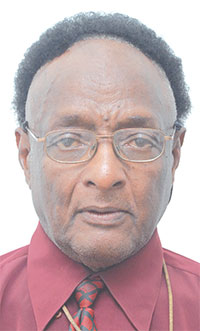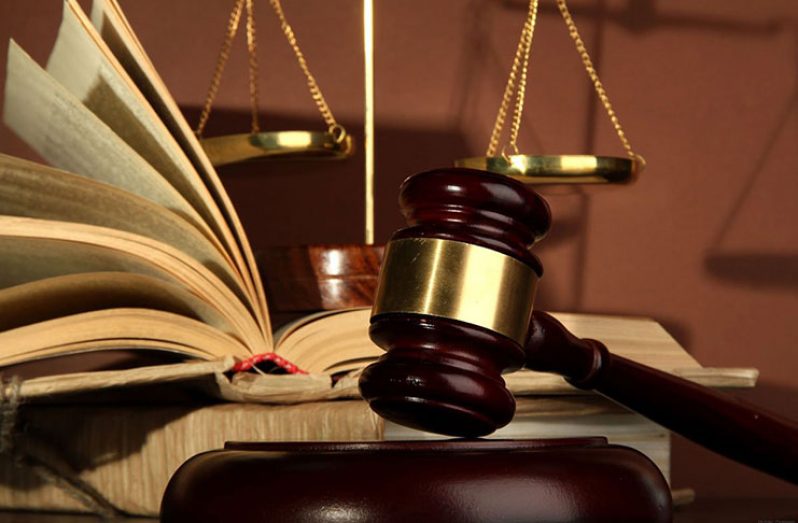Insanally loses to City Council
Federal Supreme Court upturned High Court decision

THE Town Clerk of Georgetown was victorious in a court battle in 1959 which resulted in the High Court ordering an injunction, restraining appellant Insanally from making further alterations or additions to his building in breach of the Ordinance and Bye-laws.
But Insanally appealed and the Federal Supreme Court after a hearing which lasted four days found that the Georgetown Town Council, the respondent, had no locus standi in proceedings for an injunction, and that the Attorney General would have been the proper plaintiff.
The appeal was allowed by the Federal Supreme Court, constituted by Chief Justice Hallinan and Justices of Appeal, Lewis and Marnan.
Dr. Fenton Ramsahoye, Q.C., and Mr. Clarence Hughes, Q.C., appeared for the appellant while Mr. C. Lloyd Luckhoo, Q.C. and Mr. S. Rahaman, represented the respondent.
Delivering the judgment Chief Justice Hallinan said, The Georgetown Town Council, on September 1, 1959, issued a summons in the Magistrates’ Court against the appellant under Section 136 of the Public Health Ordinance , Chapter 145 [B.G.], for breach of that Ordinance .
The Building Inspector had visited the appellant’s premises, Lot 9, Camp Street, Newburg, and found that he had extended the building on the northern side by a structure, 8 feet 6 inches x 47 feet 6 inches, so that a building whose authorised area was 767 square feet had been increased by 408 square feet. After numerous adjournments in the magistrates’ court, the appellant, during the absence of the Town Council’s lawyer, succeeded (in circumstances which reflect little credit on the court and still less on the appellant) in amending the summons so that the area, the subject matter of the offence, was reduced from 408 square feet to a mere area of some 67 square feet; where upon the appellant quickly pleaded guilty and the magistrate fined him $10.
According to the Chief Justice, even after the case, in the magistrate’s court had ended, the appellant continued to extend his building, and by February 17, 1960, the area of unauthorised building had reached 408 square feet. The Town Council then launched the present proceeding in the name of the Town Council claiming a declaration that the appellant had, by altering and adding to the building, done acts of nuisance and was in breach of the Public Health Ordinance and of the Bye-laws made under the Georgetown Town Council Ordinance, Chapter 152 [B.G.]; also the Town Council claimed a mandatory injunction that the appellant should pull down the unauthorised building, and an injunction to restrain him from doing further alterations or additions.
The Court granted the Town Council the declarations as claimed and also granted an injunction to restrain the appellant from doing and making further additions or alterations.
Continuing, the Chief Justice noted that it can be said at once that the declaration granted by the court cannot stand. There was no evidence of nuisance and no authority has been cited to us where a declaration was made in civil proceedings that the defendant had committed a criminal offence.
On principle, said the Chief Justice, I am of opinion that it is a wrong exercise of the court’s jurisdiction to give a declaratory judgment of that kind.
However, had this action been properly constituted, an injunction might have been an appropriate remedy; A.G. v Ashbourne Recreation Ground Co. (1) v Wimbledon House Estate Co. Ltd. (2) are cases where suits were successfully brought by the Attorney General on behalf of the public to restrain, by injunction, infringement of statutes dealing with public health and bye-laws made thereunder. In the Ashbourne case (1), Justice Buckley, [1908] 1 Ch. at pp 160-107) first stated the general principle that where a liability is created by statute and a remedy given, the statute can only be enforced by the statutory a remedy. But he says:
“there is at least one exception to the general rule . There may co-exist a remedy by injunction to protect rights. It cannot be disputed after Cooper v Whittingham (3), that if a plaintiff is suing in a personal right to himself he may be protected by injunction; the Attorney General suing in respect of the invasion of the public rights has at least as large a right to invoke the protection of the court.”
Continuing his judgment, Chief Justice Hallinan explained that the main ground of appeal is that the respondent had no locus standi, except at the relation of the Attorney General who should have been the plaintiff in these proceedings. It was submitted that the acts alleged against the appellant did not infringe any right vested in the Town Council either under Chapter 145 or under Bye-law 15, made under Chapter 152.
The case of Davenport Corpn. v Tozer (4) is clear authority in support of this ground of appeal, and I am unable to distinguish it from the present case. In the Devonport case (4), the Corporation alleged that the defendants were laying out highways in “new streets “ which did not comply with the borough bye-laws as to width. The suit failed; Collins, M.R., stated the reason thus ([1908] 1Ch. At p.762}:
“Where the local authority which have certain special rights to sue in their own name for certain special remedies, but have not done so, and are trying to put in suit a public wrong, they must do it in the recognised way, namely, at the suit of the Attorney General.”
Before deciding in favour of the appellant, Chief Justice Hallinan cited an interesting passage from the judgment of Lush L.J., in A.G. v Kerr and Bull (1914), 79 J.P at p. 53):
“Obedience to bye-laws even as to the construction of a dwelling house, is, I
think, a public duty, and disobedience to their instructions is prima facie a
public wrong ….”
Ruling the Chief Justice said “I think the judgment in this case should be set aside and judgment entered for the appellant with costs here and below. Justices Lewis and Marnan concurred. .


.jpg)











